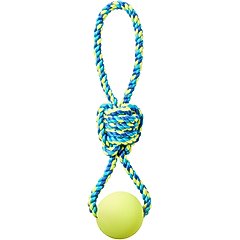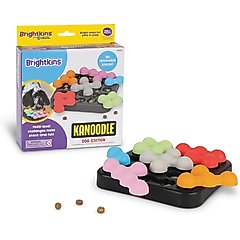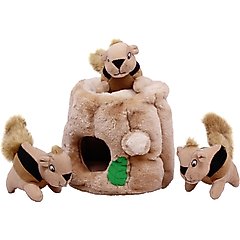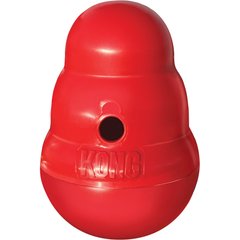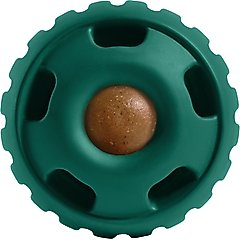Why Does My Dog Play Reverse Fetch? Is This Normal?
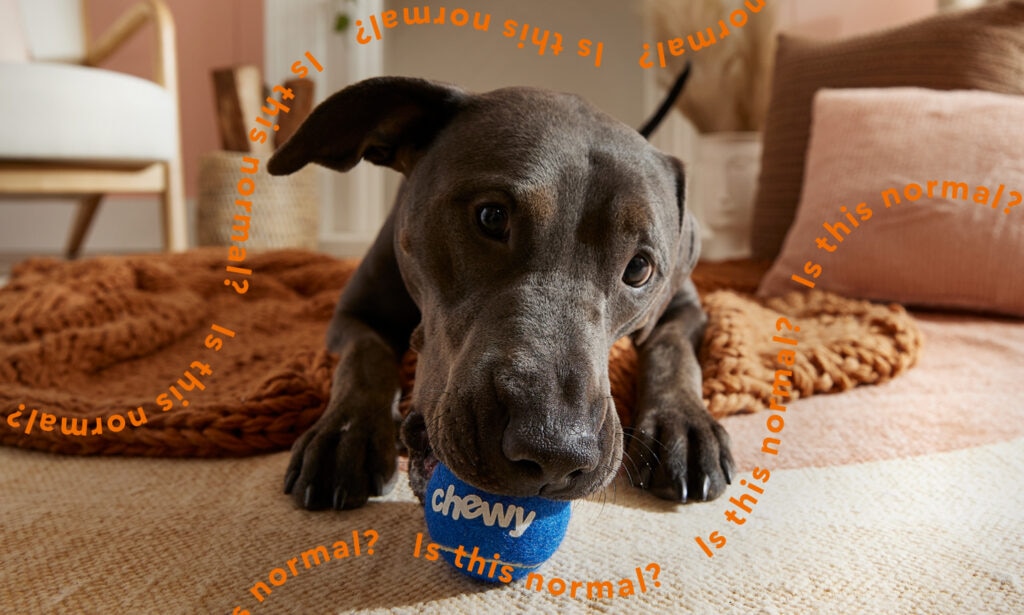
Photo by Chewy
Q: My dog plays reverse fetch where I have to chase after a ball or toy instead of them doing the chasing. It’s hilarious and cute (and definitely helps me get my steps in), but is this normal behavior?
A: Switching up the roles and playing reverse fetch is usually completely normal. It’s often just a fun and creative way for them to engage with you and level up playtime. That said, there are some scenarios where reverse fetch might signal something more.
We spoke to a canine behavior expert and a veterinarian all about reverse fetch.
Key Takeaways
- It’s often normal for dogs to play reverse fetch and not something for a pet parent to worry about.
- Reverse fetch is usually a way for dogs to interact with their pet parents in a new way, and can even signal a very intellectual and engaging personality.
- Sometimes, reverse fetch can signal that a dog is bored; that they don’t understand the game; or that they’re anxious and resource guarding.
What Is Reverse Fetch in Dogs?
Reverse fetch is when your dog throws or hides their toy, then looks at you expectantly, probably waiting for you to get it, explains Erin Askeland, CPDT-KA, CBCC-KA, Camp Bow Wow’s animal health and behavior expert.
This is the opposite of how a traditional game of fetch goes with dogs, where you throw the toy and your pup brings it back to you to toss again.
When playing reverse fetch with your dog, we recommend using a fetch toy approved for play—one that’s light and easy for your pup to chuck on their own, like the Frisco Rope with Rubber Ball Dog Toy or Chuckit! Paraflight Dog Toy.
Recommended Products
Why Do Dogs Play Reverse Fetch?
Dogs play reverse fetch for all kinds of reasons, ranging from simply wanting to try a new way of playing together to feeling bored and trying to get your attention.
Let’s explore some common scenarios.
They’re Initiating Play
Your pup can’t exactly come up to you and say, “Hi! I’d like to play a game now.” Instead, they do this in their own way by barking, pawing at you, or even initiating a game of fetch.
“Some dogs naturally use this as a way to initiate mutual play, mirroring dog-to-dog play styles,” Askeland says. “Your dog may have learned that dropping or tossing a toy away gets you to engage and chase it, which is fun for them and gets you to provide attention.”
They Want To Bond
Reverse fetch can also be a new way for a dog to bond with their pet parent.
“They may be used to playing traditional fetch, and this is a fun way to make their [pet parents] the retriever now,” says Lisa Ciucci, DVM, veterinarian and owner of Gardens Animal Hospital in Palm Beach Gardens, Florida.
“Some dogs are more creative and come up with this type of play on their own,” she adds.
They’re Feeling Bored
If you find your pup engaging in reverse fetch often—especially when you’re sitting or resting—it could be a sign they’re feeling bored and want some more interaction with you.
First, make sure you’re engaging enough with them. If you are, consider ways to add more stimulation to their day, like with a puzzle toy. Try the Brightkins Kanoodle Puzzle Dog Toy or the Outward Hound Hide A Squirrel Squeaky Puzzle Plush Dog Toy.
Recommended Products
They’re Getting Creative
Tossing or hiding a toy may also be your dog’s way of “adding a layer of challenge to their play routine or even a level of control to the game,” Askeland says.
You can keep playing reverse fetch with them, but also think about different ways you can keep leveling up your playtime together. That can be through new toys, more challenging toys, or short training sessions woven into play.
Should I Worry About This Behavior?
Playing reverse fetch is rarely a cause for concern. Most of the time, it’s a way for your dog to initiate playtime or make your interactions more fun and exciting.
“This behavior can be totally normal, and typically indicates a very intellectual and engaging personality,” Dr. Ciucci says.
That said, there are some outlier scenarios and steps you can take:
- Resource guarding: Resource guarding is when your dog hides a toy, and growls or stiffens when you try to retrieve it, Askeland says. “If you see signs of guarding or stress,” she adds, “it’s worth consulting a professional dog trainer to ensure the play remains safe and fun.”
- Confusion: Reverse fetch can sometimes signal underlying frustration or confusion. “This happens when your dog doesn’t understand how to bring the toy back or doesn’t fully grasp the fetch game,” Askeland says. In this situation, it’s a matter of training your pup to understand the game through cues like “drop it” and rewarded retrieval.
- Boredom: Dogs who are understimulated may engage in reverse fetch to get your attention. If your pup consistently tries to initiate playtime this way—especially in an attempt to get you interacting with them—they may need more interaction and/or more engaging enrichment activities and dog toys, like the KONG Wobbler or the Woof Pupsicle.
Recommended Products
FAQs About Reverse Fetch in Dogs
Is reverse fetch a sign of a behavior problem?
No, dogs playing reverse fetch doesn’t usually mean there’s a behavior problem. It’s often just a fun way for them to change the usual game and get you to interact with them in a new way.
The only time to be concerned is if they’re resource guarding, feeling confused, or appear consistently understimulated.
Why won’t my dog drop the toy during fetch?
This can happen if dogs want to play a little tug-of-war with their pet parents. Give the toy a little shake back and forth, and light tugs to interact with your pup this way.
If your dog seems angry—growling, stiff, and showing teeth in a non-playful way—they could be resource guarding. This is a sign of stress and needs course-correction through training.
How do I teach my dog to drop the toy?
Teach a reliable “drop” cue using high-value dog treats in a low-distraction setting.
Recommended Product
Start by trading the toy for a treat—saying “drop it” as they release the toy each time—then immediately rewarding your pup.
With consistency, your pup will learn that giving up the toy leads to something good.
Can reverse fetch be trained out of a dog?
Yes, reverse fetch can be trained out of a dog. To teach a traditional game of fetch to your dog, you must reward them for bringing the toy toward you, not away.
“Even small movements toward you with the toy should earn praise or a treat,” Askeland says. “Keep sessions short and fun, ending the game before your dog disengages.”
She adds that attaching the toy to a long dog leash, like the PetSafe Cotton Dog Training Lead, can help encourage a fetch-and-return pattern.
Recommended Product
